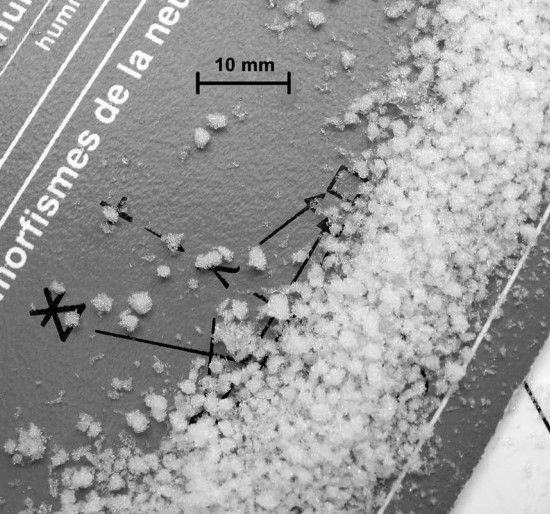Ball-bearing-like crystals that form from water droplets freezing and coalescing around precipitation particles; a potential weak layer.
Snow crystals grow inside clouds made of water droplets. If they collide, these droplets can freeze to the snow crystal. Once frozen, these small droplets are called rime. If the snow crystal becomes completely covered in rime, it’s called graupel. Graupel is a heavily rimed snow crystal that looks like a miniature snowball. Like ball bearings buried in the snow, graupel doesn’t bond well immediately, and it can be one of the slowest precipitation particles to heal. After it falls from the sky, graupel often rolls off of steeper slopes and pools on aprons below steep faces and gullies. Thus, instabilities associated with buried graupel are more common on moderately angled terrain or below classic start zones, which is uncharacteristic of most storm snow instabilities. Lesser rimed precipitation particles can also act as weak layers.

A buried graupel layer demonstrates its ball-bearing-like appearance. Credit: Gallatin National Forest Avalanche Center


